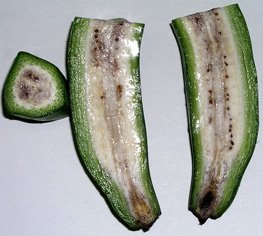If you’ve been following (listening to?) our tweets ((I never thought I’d ever write that, but time and the social web wait for no-one.)) you might have seen this enigmatic little gem:
Population genetic diversity influences colonization success. K. M. CRAWFORD. Molecular Ecology: http://goo.gl/JFHh
And, possibly, ignored it. It must have registered at some level though, because when I saw Inbreeding bad for invasives too at C.J.A. Bradshaw’s blog Conservationbytes.com I thought, “Hmmn, I wonder if that’s the thing we tweeted”. ((Which gives me the opportunity to remind you that we don’t tweet everything we write about here, nor do we write here about everything we tweet.)) And it was. Bradshaw does a great job of explaining how it is that reduced genetic diversity contributes not only to a population’s risk of extinction, but also to its ability to invade new habitats.
Crawford & Whitney measured greater population-level seedling emergence rates, biomass production, flowering duration and reproduction in high-diversity populations compared to lower-diversity ones. Maintain a high genetic diversity and your invasive species has a much higher potential to colonise a novel environment and spread throughout it.
Of course, this is related to propagule pressure because the more individuals that invade/are introduced the more times, the higher the likelihood that different genomes will be introduced as well.
So far the experimental evidence comes only from Arabidopsis thaliana, the white rat of the plant biologist. But I’d be willing to bet that if you could measure such a thing as invasiveness and persistence for crop varieties, where people, rather than nature, determine how many propagules survive and spread, the ones that are both widespread and long-lasting are also the ones with the most genetic diversity.
 Somewhere this morning I read something silly from a conservation whiner that the mainstream media would pay more attention to Paris Hilton taking a pee in South Africa, or 10 murders, than the loss of 10 wild species. I didn’t even bother to bookmark it, so familiar was the sentiment. To redress the balance, here’s an entirely new banana cultivar, heretofore unknown to science, spotted by Luigi on the
Somewhere this morning I read something silly from a conservation whiner that the mainstream media would pay more attention to Paris Hilton taking a pee in South Africa, or 10 murders, than the loss of 10 wild species. I didn’t even bother to bookmark it, so familiar was the sentiment. To redress the balance, here’s an entirely new banana cultivar, heretofore unknown to science, spotted by Luigi on the